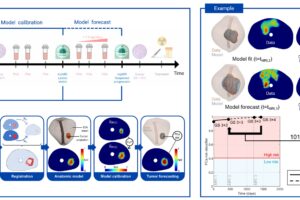
In two years, ARMADILLO will be launched into space.
No, not the armor-clad animal often seen, feet up, by the side of the road. This ARMADILLO is a small cube satellite developed by students in the University of Texas at Austin’s Satellite Design Lab (SDL), which recently won first place in the national University Nanosatellite Program.
The competition, sponsored by the U.S. Air Force and held in January, invites 10 universities to design and build their own satellites over a period of two years. After two years, a panel of experts judges the satellites at Air Force Research Laboratories in Albuquerque, N.M. ARMADILLO won the CubeSat class and Georgia Tech won in the Nanosatellite class.

Led by Professor Glenn Lightsey in the Department of Aerospace Engineering and Engineering Mechanics, the Satellite Design Lab is the first research group to win the University Nanosatellite competition twice as an individual team. In 2005, the lab won first place in the national competition with its entry, FASTRAC, a pair of nanosatellites that was launched into space in 2010. The team is studying how these two satellites work together and share information a technological innovation for such small satellites.
“We’re making these small satellites with much more advanced technology and capability than has ever been done before,” Lightsey says. “By decreasing the size of the satellite, it will also be possible for groups of satellites to work cooperatively and perform operations simultaneously, such as building structures in space and taking measurements collectively.”

ARMADILLO (Atmosphere Related Measurements And Detection of submILLimeter Objects) is a three-unit CubeSat that will measure space debris (a hazard for operational spacecraft), allowing scientists to characterize it and better understand the sources and life cycles of space pollution. CubeSats are miniature handheld satellites that are generally built using commercial off-the-shelf electronics components, making them very cost-effective.
ARMADILLO will be carrying the Piezo Dust Detector (PDD), an instrument contributed by Baylor University’s CASPER Lab. It will be used to measure small impacts to the satellite caused by space debris. It will also carry a GPS receiver, which is being built at the University of Texas Radionavigation Lab, which is part of the Cockrell School.
The ARMADILLO mission is a research project that incorporates systems engineering throughout the entire process. Students who participate in the project gain valuable hands-on experience while working in the SDL.
“These hands-on projects improve the research experience by allowing students to put into practice what they learn in a theoretical and classroom setting,” said graduate student Katharine Brumbaugh, who serves as the ARMADILLO student manager. “Many times we think we know the material, but then real-life complications set in and you have to find a new solution. Working on ARMADILLO allows students to learn how to deal with these situations on tangible products.”
ARMADILLO has become Brumbaugh’s research as a Ph.D. candidate in the aerospace engineering program.

“Few research topics allow such hands-on experience as part of the degree program. Because we are physically building a spacecraft, I am able to work on the theoretical aspects of my research, but then walk into the lab and see them in action. I am able to mentor the younger students and gain valuable leadership experience on a real spacecraft mission. Over the past two years, I’ve learned what is necessary to take a spacecraft from initial design to flight-like quality. These skills are exactly what I plan on using for my career.”
The award comes with a two-year grant of $55,000 per year and assistance from the Air Force to prepare the satellite for launch. The group plans to refine the design, build the flight unit, upgrade the ground station and eventually launch the satellite into space where it will collect data and perform the scientific mission. Throughout the process, the research team will meet with experts from the Air Force who will conduct reviews and provide technical support.
ARMADILLO will launch near the end of 2014 or early 2015. It will be launched as a secondary payload aboard a NASA rocket.
Related items:
The University of Texas at Austin Wins First Place in National Nanosatellite Competition



